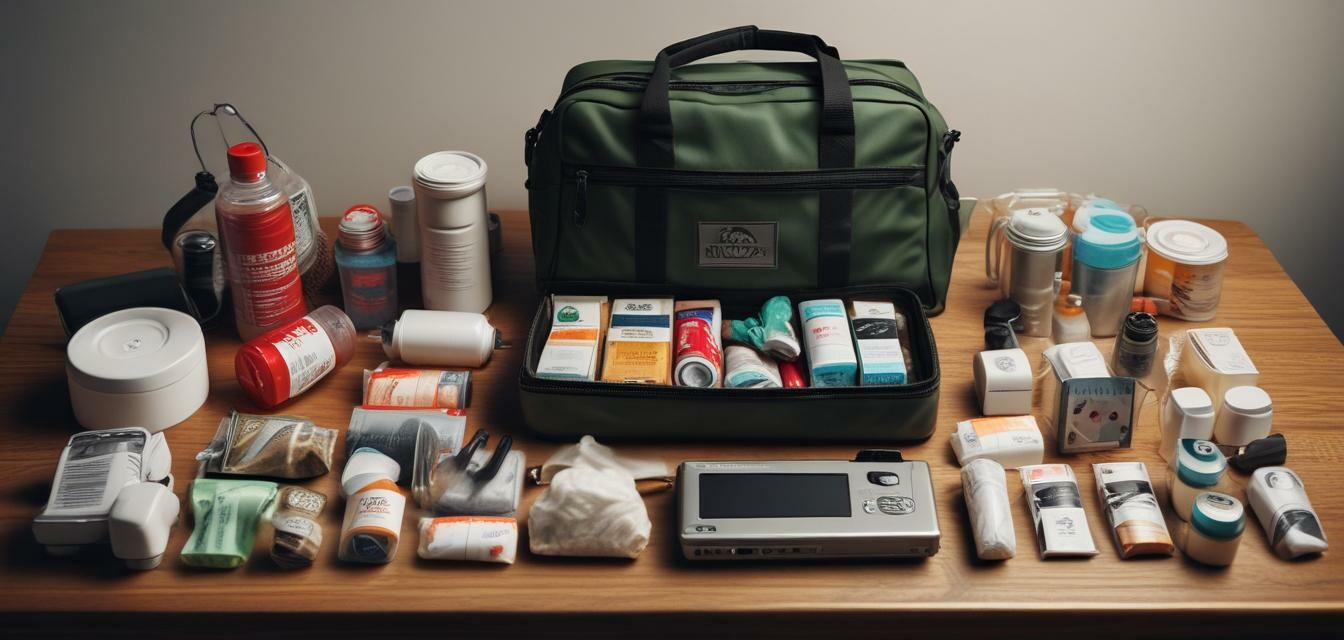
Building a Comprehensive Emergency Kit
Key Takeaways
- Understand the essential items for an emergency kit.
- Customize your kit based on personal and family needs.
- Consider various scenarios like natural disasters and power outages.
- Implement practical steps to ensure readiness.
Emergencies can strike at any moment, making it crucial to have a well-rounded emergency kit ready to go. Whether it's a power outage, a natural disaster, or a camping trip, being prepared can make all the difference. In this guide, we'll provide step-by-step instructions on creating a comprehensive emergency kit tailored to your specific needs. Let's dive in!
Why You Need an Emergency Kit
First, it's important to understand why having an emergency kit is essential. An emergency kit provides you with the tools and resources necessary to respond effectively to unexpected situations. Below are some common scenarios where an emergency kit is invaluable:
- Severe weather events like hurricanes, floods, and winter storms.
- Extended power outages due to natural disasters or outages.
- Camping trips or outdoor adventures where access to resources may be limited.
Must-Have Items for Your Emergency Kit
Here’s a list of essential items you should consider including in your emergency kit:
| Category | Items |
|---|---|
| Power Supply | Portable power stations, solar chargers |
| First Aid | First aid kit, prescription medications, necessary medical supplies |
| Food & Water | Non-perishable food items, bottled water, water purification tablets |
| Lighting | Flashlights, emergency candles, LED lanterns |
| Tools | Multi-tool, rope, duct tape, whistle |
Customizing Your Kit
Every emergency kit should be tailored to meet your personal needs. Here’s how you can customize your kit based on different scenarios:
1. For Natural Disasters
- Include local maps and emergency contacts.
- Add a battery-operated radio for updates.
2. For Camping Trips
- Pack extra clothing and sleeping gear.
- Include additional food supplies tailored to your dietary needs.
3. For Power Outages at Home
- Have enough backup power options for essential devices.
- Stock up on comforting food options like snacks.
Best Practices for Maintaining Your Kit
To ensure your emergency kit is always ready, follow these best practices:
- Check your kit at least once a year and replace expired items.
- Keep your kit easily accessible, like in a designated storage area.
- Make sure all family members know where the kit is located.
Additional Resources
For more information on emergency preparedness, you can check out our detailed buying guides on specific items:
- Buying Guides - Find the best supplies for creating an effective emergency kit.
- Battery Backup Systems - Explore options for ensuring you have power during outages.
- Portable Power Stations - Discover the benefits of having portable energy at hand.
- Emergency Lighting Solutions - Ensure visibility during emergencies.
- Solar Charging Kits - Use sustainable energy sources to recharge your devices.
Pros
- Provides peace of mind during emergencies.
- Ensures safety and preparedness for varying scenarios.
- Can be customized to fit personal and family needs.
Cons
- Initial cost of supplies can be high.
- Requires regular maintenance to keep items fresh.
Final Thoughts
Building a comprehensive emergency kit is not just about having a collection of supplies; it's about being prepared for the unexpected. By taking the time to understand your needs and customizing your kit, you can confidently ensure your safety and that of your loved ones. Stay prepared, and you'll be ready for anything life throws your way!
